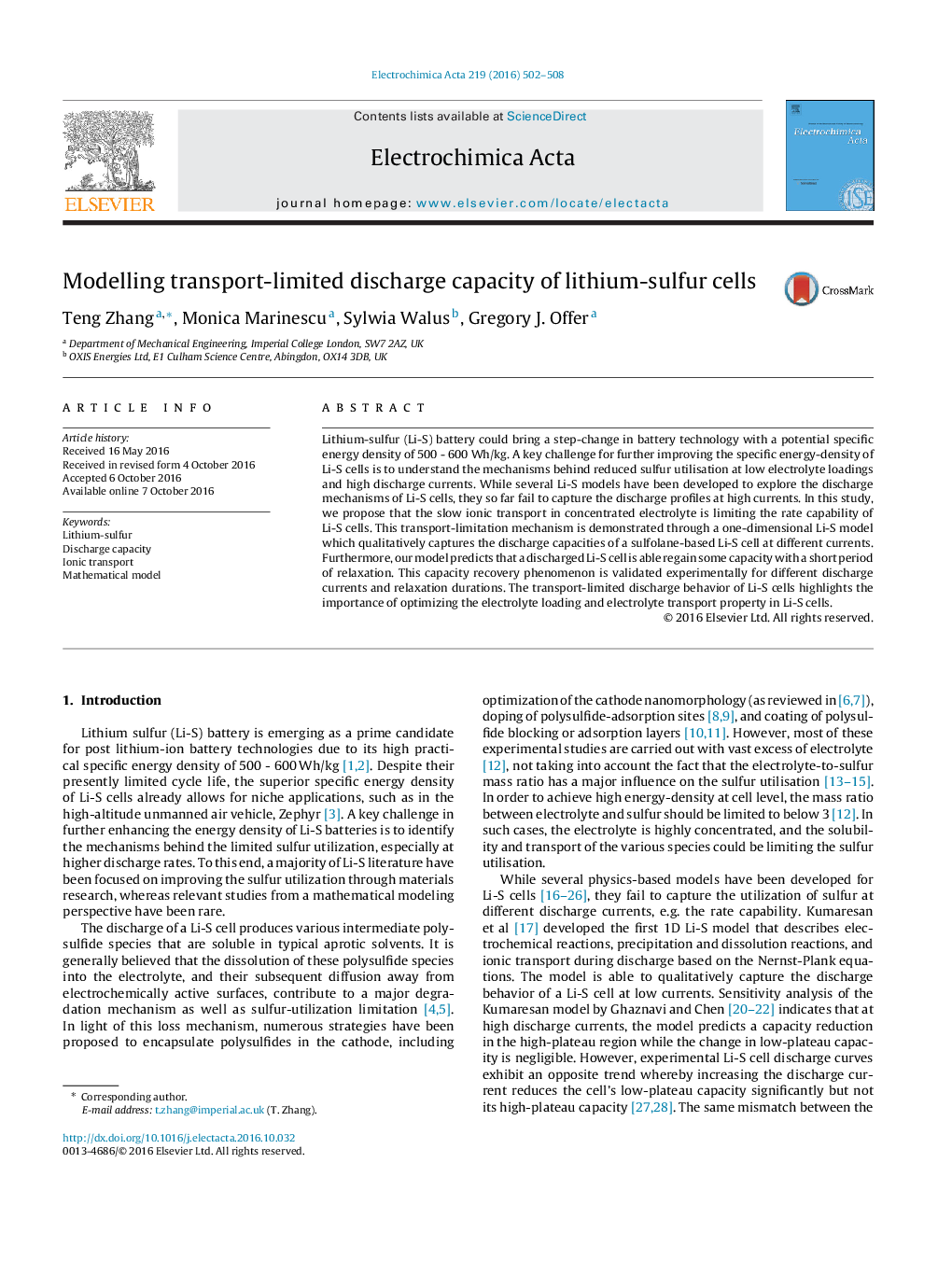| کد مقاله | کد نشریه | سال انتشار | مقاله انگلیسی | نسخه تمام متن |
|---|---|---|---|---|
| 6472978 | 1424138 | 2016 | 7 صفحه PDF | دانلود رایگان |
- We modelled the rate capability of a Li-S cell based on mass-transport limitation
- The model predicts a discharged Li-S cell to regain capacity upon short relaxation
- Modelled rate capability and capacity recovery effect validated with measurements
Lithium-sulfur (Li-S) battery could bring a step-change in battery technology with a potential specific energy density of 500 - 600 Wh/kg. A key challenge for further improving the specific energy-density of Li-S cells is to understand the mechanisms behind reduced sulfur utilisation at low electrolyte loadings and high discharge currents. While several Li-S models have been developed to explore the discharge mechanisms of Li-S cells, they so far fail to capture the discharge profiles at high currents. In this study, we propose that the slow ionic transport in concentrated electrolyte is limiting the rate capability of Li-S cells. This transport-limitation mechanism is demonstrated through a one-dimensional Li-S model which qualitatively captures the discharge capacities of a sulfolane-based Li-S cell at different currents. Furthermore, our model predicts that a discharged Li-S cell is able regain some capacity with a short period of relaxation. This capacity recovery phenomenon is validated experimentally for different discharge currents and relaxation durations. The transport-limited discharge behavior of Li-S cells highlights the importance of optimizing the electrolyte loading and electrolyte transport property in Li-S cells.
Journal: Electrochimica Acta - Volume 219, 20 November 2016, Pages 502-508
